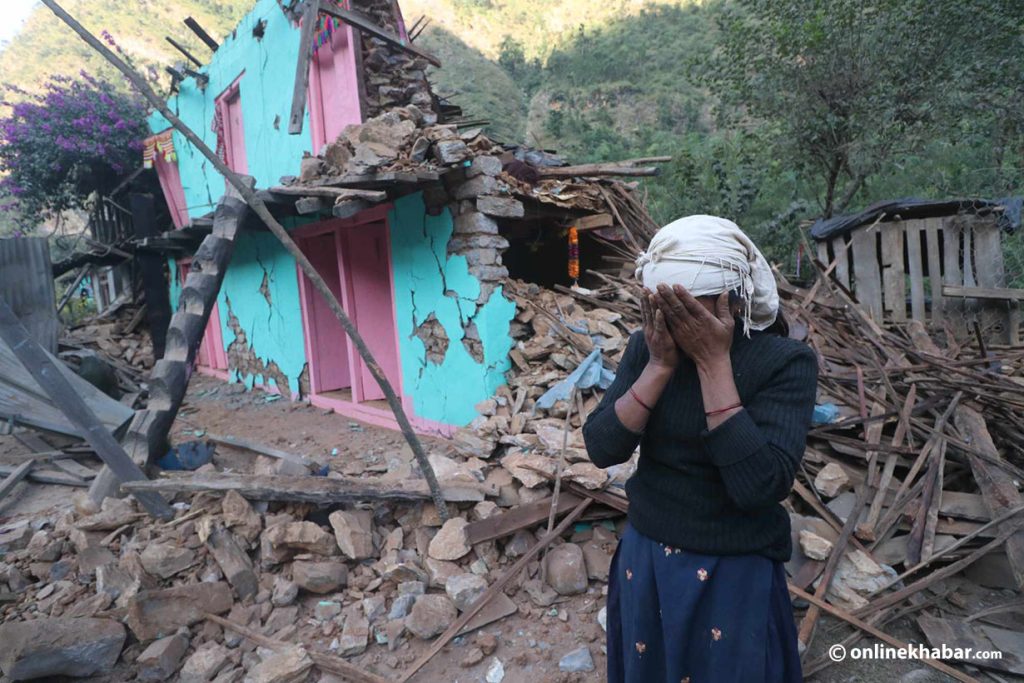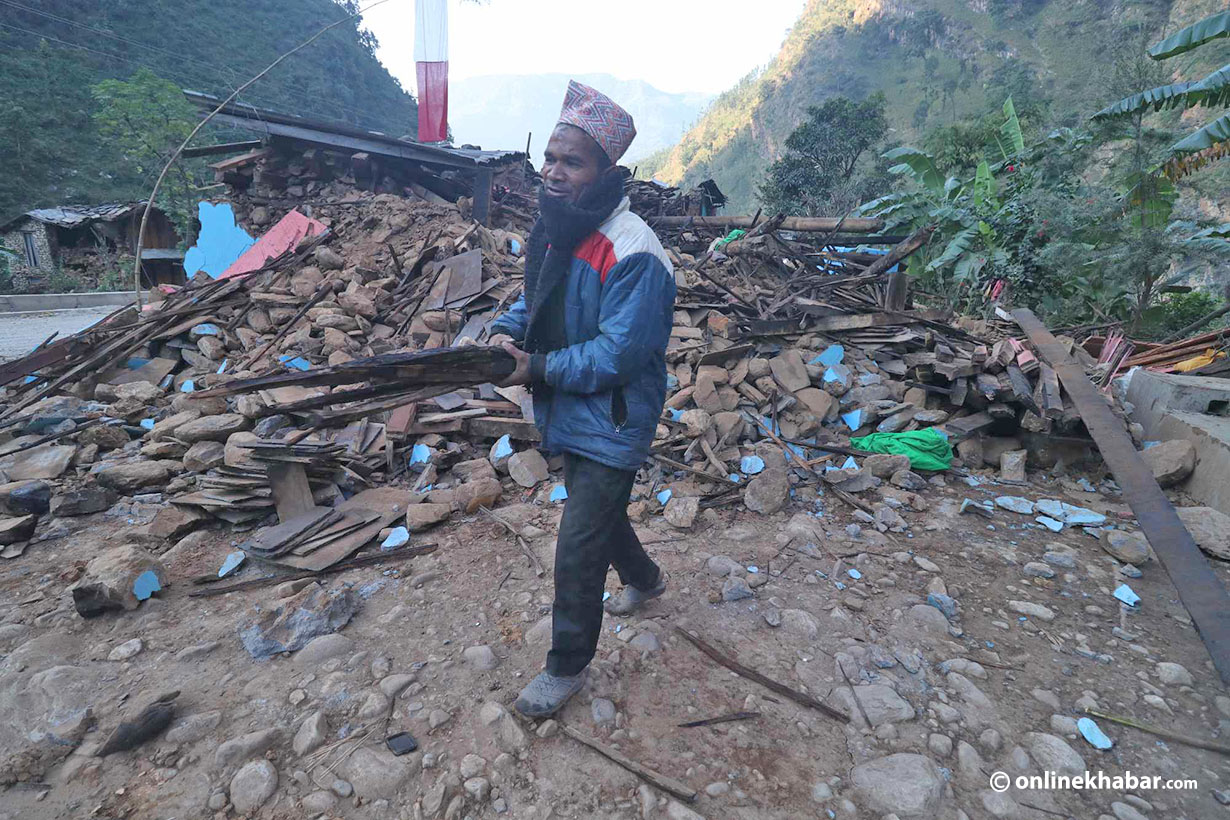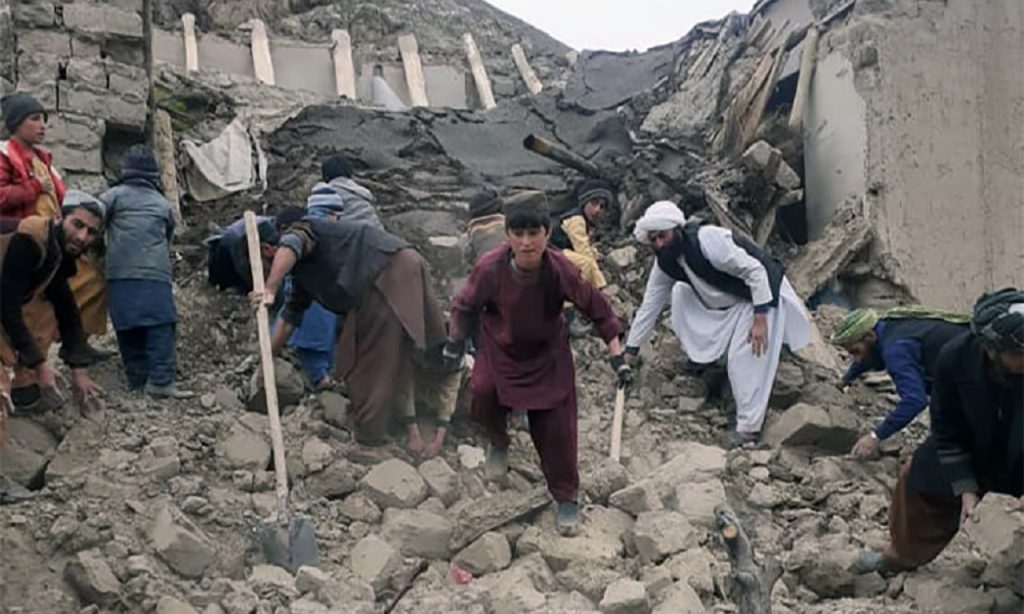
I come from the rural municipality of Bhageshwar in Dadeldhura, where the threat of various disasters, particularly earthquakes, looms large. It is disheartening to note that sufficient preparations have not been made to mitigate these risks.
In 2015, I directly experienced the devastating impacts of an earthquake. A 7.8 magnitude earthquake struck Nepal, followed by another big earthquake less than one month later. Together, these earthquakes claimed 8,970 lives, left thousands homeless and affected millions.
During that time, I had the opportunity to work and learn extensively in Sindhupalchok, focusing on humanitarian aid, relief, response, and reconstruction, where 3,440 people lost their lives, and 2,101 were injured.
I witnessed the grim conditions in which many people, having lost their homes and loved ones to the earthquake, were living. Since then, the ghost of an earthquake disaster has left me with a lingering sense of fear and apprehension.
In response, I have publicly articulated some crucial points for my municipality that could also prove valuable to other municipalities. These immediate mandatory points are not my own; they are also endorsed by the National DRRM Policy 2075 and the Disaster Risk Reduction National Strategic Action Plan 2018-2030 by the Government of Nepal.
We can substantially diminish potential future losses by drawing lessons from current events and making necessary preparations. However, there seems to be a deficiency in the commitment and concern of local governments regarding disaster preparedness.
Need for preparedness for unpredictable disaster

Having plans is one step towards preparedness for disaster. Moreover, concerned authorities such as municipalities need to implement and work on that plan to benefit society. However, the lack of taking those actions seriously for implementation and failure to make clear plans for preventive and preparatory actions are major shortcomings.
I hope that elected representatives and government officials in my rural municipality, as well as neighbouring municipalities, have felt earthquake shocks, and aftershocks, and have witnessed the impacts of recent earthquakes in Bajhang, Jajarkot, West Rukum, and nearby districts.
These incidents are unpredictable, and no one knows when and at what scale they will intensify. However, scientists and experts have consistently provided alarming information regarding the accumulating seismic energy in these areas.
I also hope that concerned local governments are well-informed and have observed the landscape of their areas, building structures, and the level of public awareness about disaster preparedness. It is prudent not to assume that such a situation will not befall us one day.
We can significantly reduce potential future losses by learning from current events and making preparations. However, the commitment and concern of local governments towards disaster preparedness appear to be lacking.
Need for initiatives

How well-prepared are the local municipalities to address these disasters? What initiatives and preparations have been put in place? To answer these questions, it is imperative to assess progress in the following areas.
By taking responsibility and adopting a forward-thinking approach, we can mitigate potential disasters. Otherwise, disaster will remain only a topic for discussion at a desk. In this regard, it is time that authorities take actions that are also clearly mentioned in the national DRRM policy and guidelines to reduce the impacts of potential disaster risks.
In order to enhance disaster preparedness and response at the municipal level, it is imperative to first develop context-specific plans that address the major disasters and crises faced by the municipality.
These plans should be dynamic and regularly updated to align with the evolving situation and time period. Concurrently, a critical step involves evaluating the effectiveness of various disaster management committees and mechanisms at the municipal, ward, and community levels.
Ensuring their activeness through regular meetings, discussions, and training is essential for an efficient disaster response system. Moreover, a comprehensive examination of the availability of emergency funds across these levels is necessary. If deficiencies are identified, proactive efforts should be made to secure such funds, taking into consideration the sensitivity and risks faced by the local population.
Furthermore, it is vital to prioritise earthquake disaster preparedness through the mandatory implementation of building codes. This can be achieved through campaigns, orientation sessions, and raising awareness about the significance and benefits of building codes.
Additionally, providing approval provisions and training for local masons is crucial to ensure compliance and proactive action in the event of an earthquake. Establishing a robust mechanism for disseminating information, issuing alerts, conducting emergency rescues, and managing relief materials at the community level before disasters strike is of paramount importance.
Planning and infrastructure for these activities should be well-defined and ready for deployment. Lastly, it is essential to develop a proactive and applicable plan for raising awareness among people’s representatives, communities, and the general public regarding potential disasters, disaster management, and the mobilisation of public resources during times of emergency.
This comprehensive approach will help municipalities better prepare for and respond to disasters, ultimately safeguarding the well-being of their residents.
Preventing and responding to disasters involves numerous complex tasks. However, by ensuring the implementation of these basic measures, significant damage can be averted at the municipal level.
If people’s representatives work systematically, rather than relying on donors after a disaster strikes, we can minimise the impact even in the face of adversity.





















